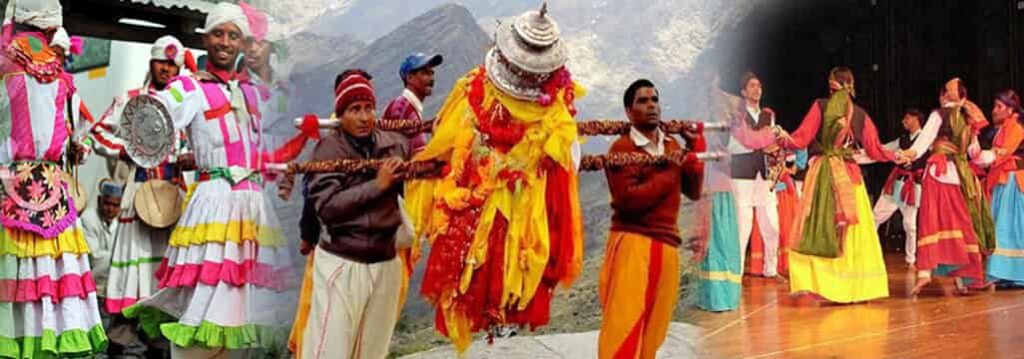-
Uttarakhand, known for its scenic beauty, is also rich in culture and traditions, and its festivals reflect the deep-rooted connection with nature, spirituality, and local customs. The festivals in Uttarakhand are celebrated with a lot of enthusiasm and are integral to the lifestyle of the people here. Some of the major festivals and cultural aspects of Uttarakhand include:
1. Kumbh Mela (Haridwar)
- Significance: Held every 12 years in Haridwar, this is one of the largest religious gatherings in the world. Pilgrims from all over India and beyond come to take a dip in the holy river Ganga to purify themselves.
- Cultural Aspect: The Kumbh Mela is not only a religious event but a cultural festival, showcasing devotional music, traditional dance, and local art forms. It also brings together people from different parts of the country, contributing to a melting pot of traditions and cultural exchanges.
2. Baisakhi
- Significance: Celebrated on 13th or 14th April, it marks the beginning of the harvest season in the state. It is a festival of thanksgiving for the crop yield.
- Cultural Aspect: Folk dances like “Langvir Nritya” and “Chholiya” are performed, and traditional songs are sung to celebrate the harvest.
3. Makar Sankranti
- Significance: Celebrated around January 14th, this festival marks the transition of the sun into the zodiac sign of Capricorn.
- Cultural Aspect: In Uttarakhand, people celebrate by flying kites, enjoying local sweets like tilgul (sesame and jaggery balls), and gathering with family and friends for festive meals. It is a time for socializing and celebrating the harvest.
4. Ganga Dussehra
- Significance: Celebrated in Haridwar and other regions along the Ganga River, this festival honors the descent of the Ganga to Earth.
- Cultural Aspect: The festival is marked by grand rituals, prayers, and the lighting of lamps along the banks of the Ganga. It is a way to express gratitude towards the river, which is considered sacred by Hindus.
5. Nanda Devi Raj Jat
- Significance: Held every 12 years, this is a major pilgrimage festival in honor of Nanda Devi, the goddess of the state. The festival is a symbolic journey undertaken by devotees to the Nanda Devi Temple.
- Cultural Aspect: The festival is a grand procession that passes through villages, with people carrying the deity in a palki (palanquin). It is marked by vibrant folk dances and chants, highlighting the strong bond between the people and their local deities.
6. Devi Puja & Holi
- Significance: Holi is celebrated with zeal across the state, with a focus on honoring the local deities and the arrival of spring.
- Cultural Aspect: The festival is celebrated with colorful powders, traditional songs, and dances. In many rural areas, it’s a more intimate, community-focused celebration, with people offering prayers and dancing together in a collective spirit of joy.
7. Tihar (Deepawali)
- Significance: Tihar, the festival of lights, is celebrated in honor of various deities. It is similar to Diwali, but in Uttarakhand, it also includes the worship of animals like crows, dogs, cows, and oxen.
- Cultural Aspect: People decorate their homes with oil lamps and rangolis, and the worship of animals signifies gratitude towards animals for their role in people’s lives.
